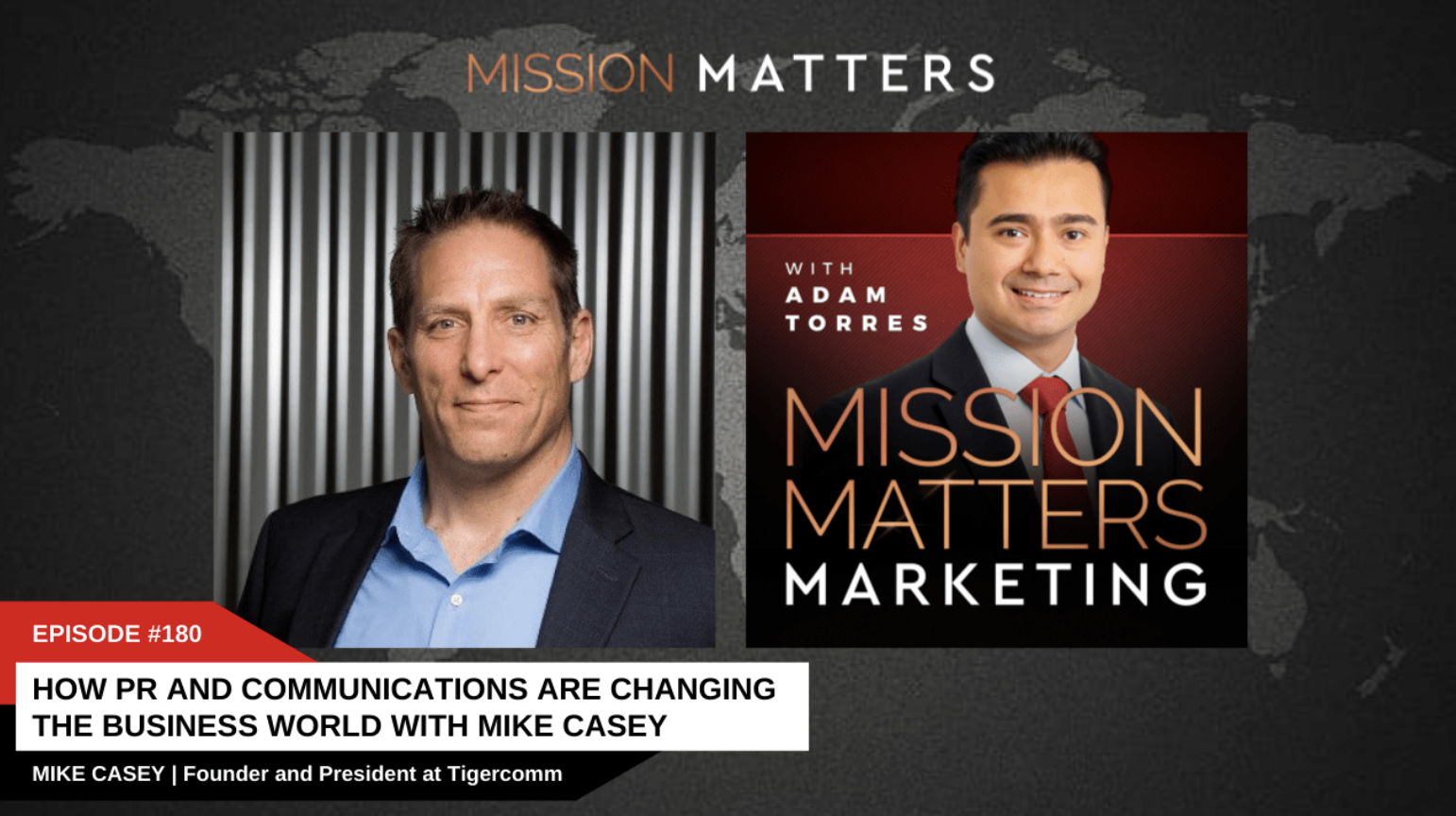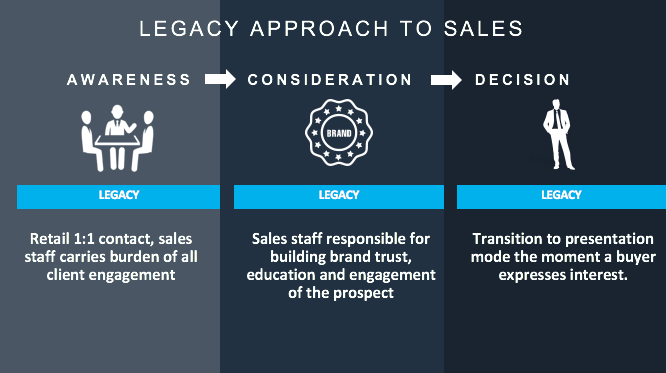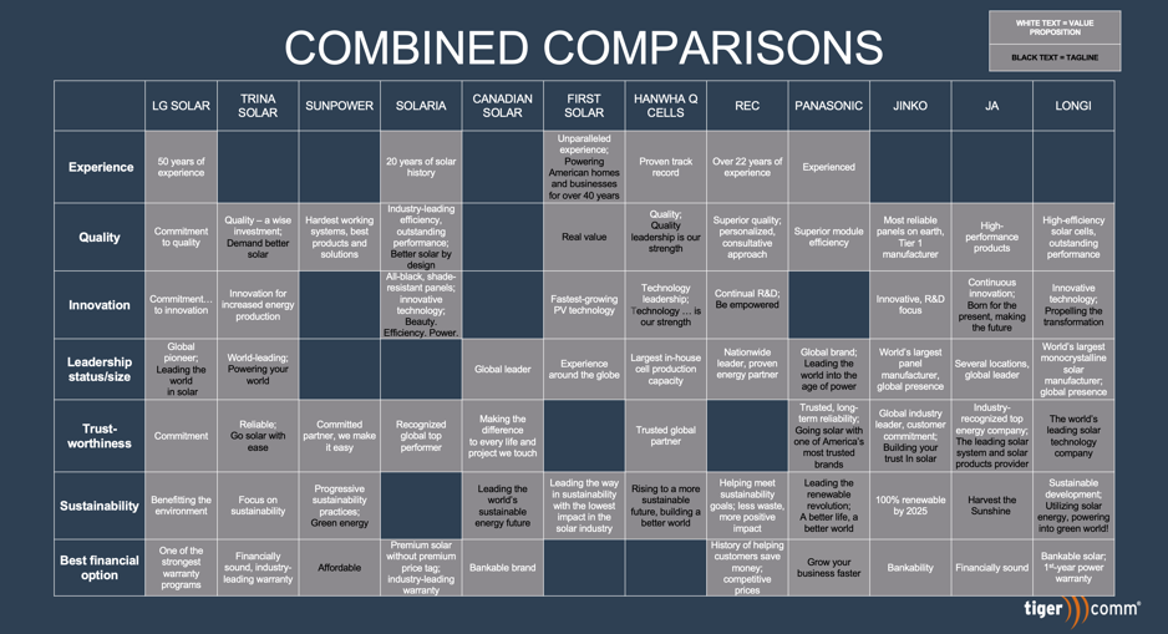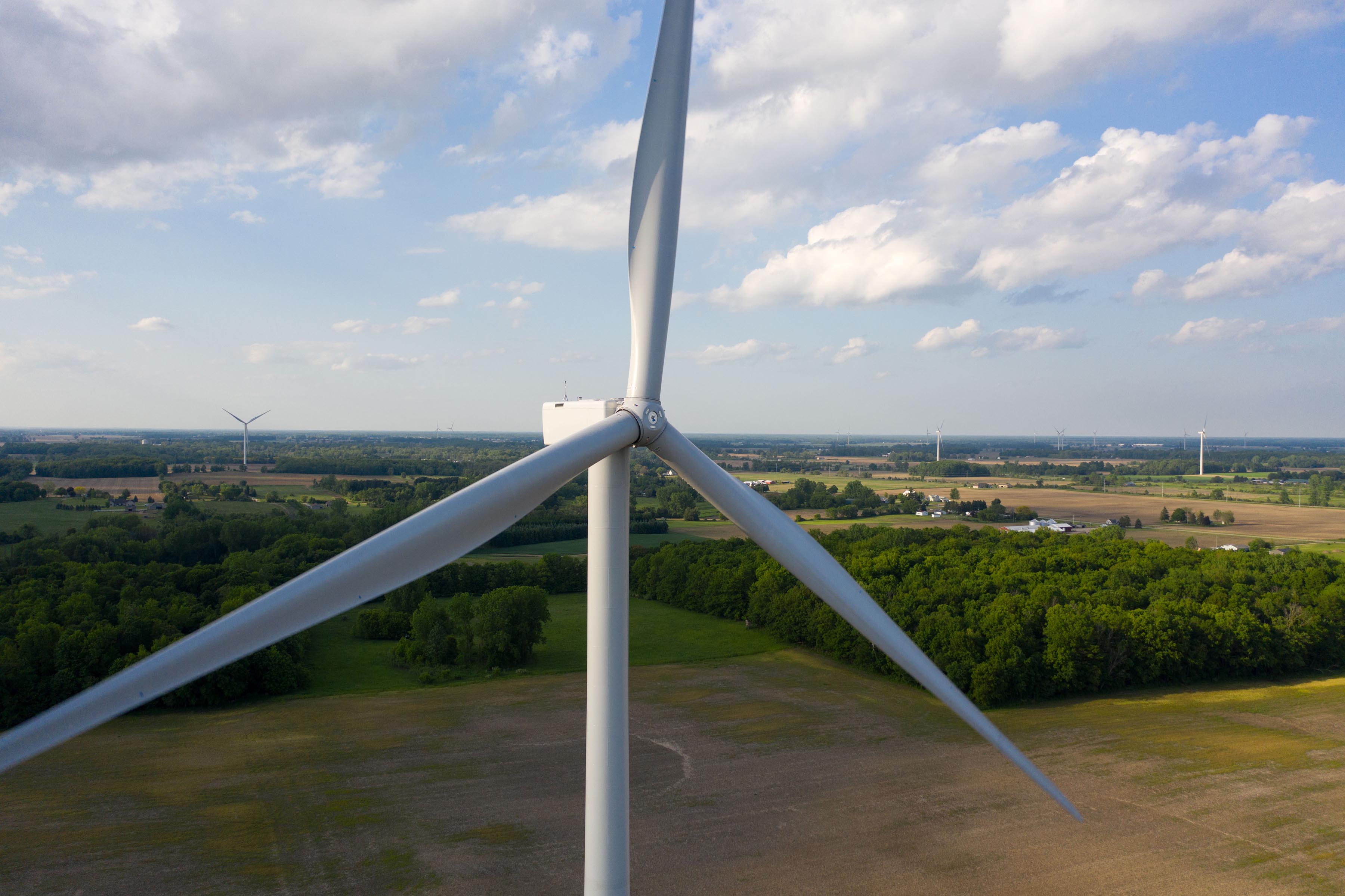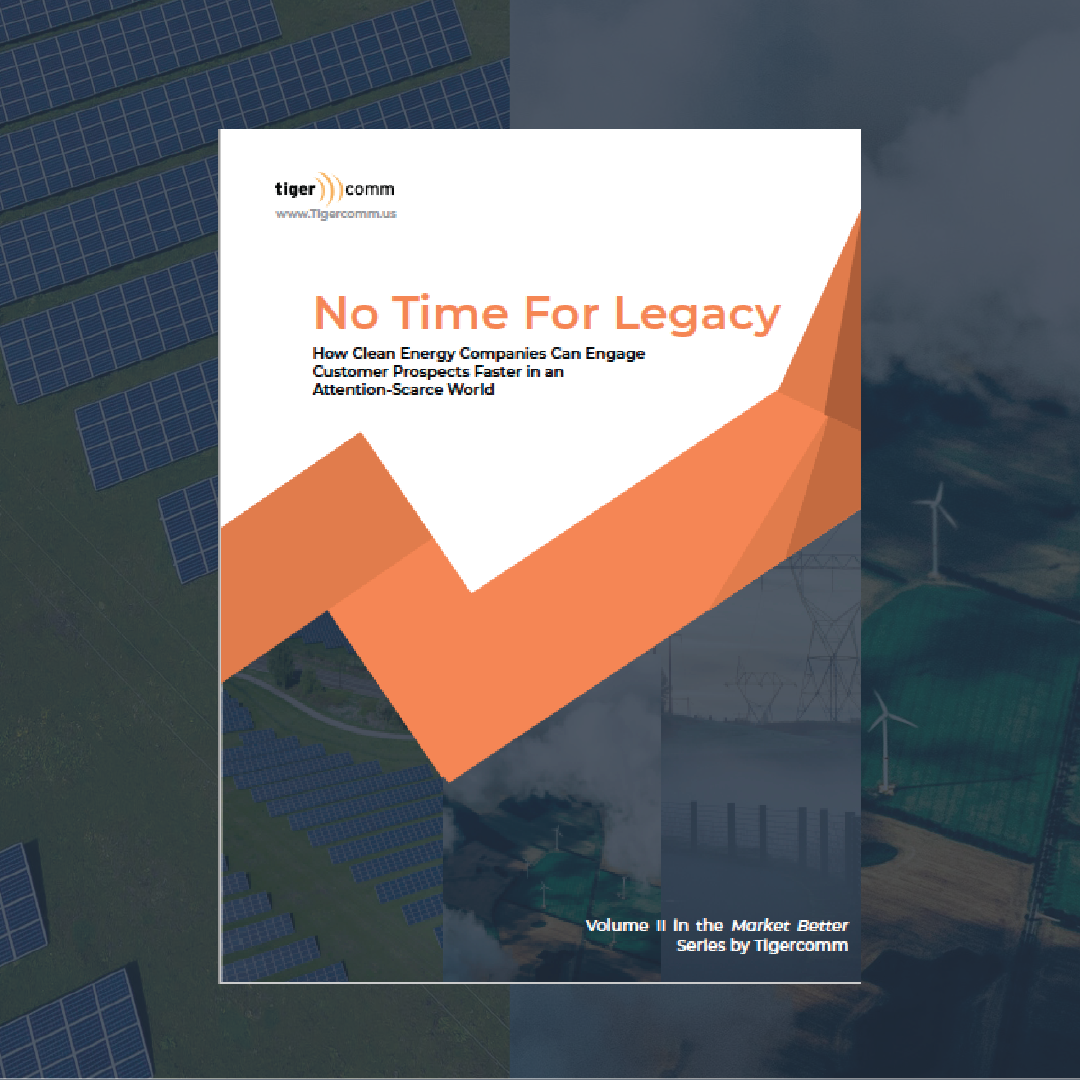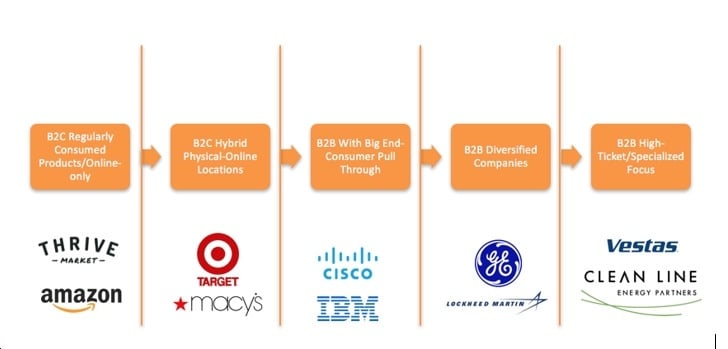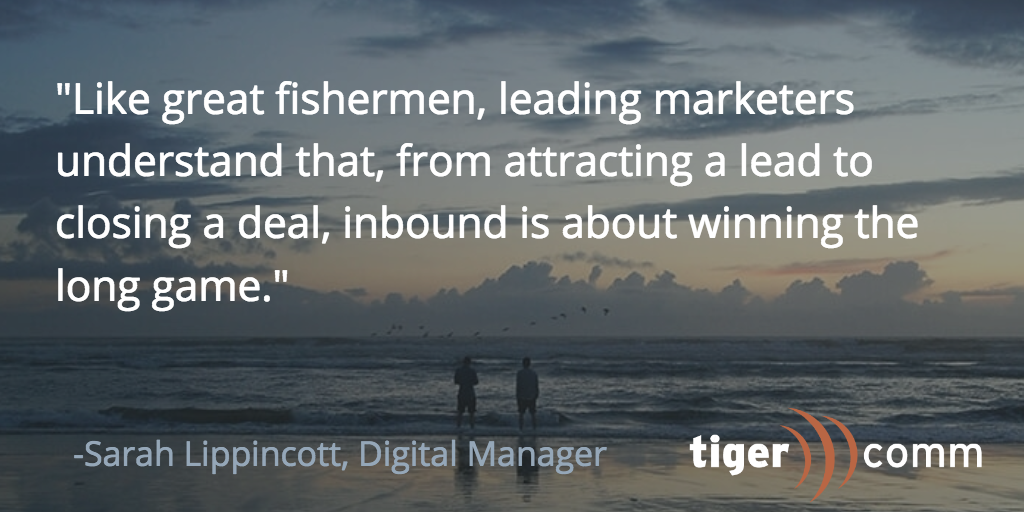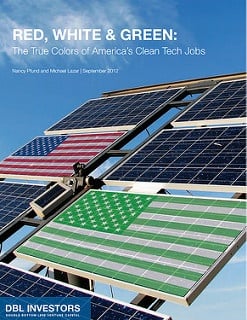Insights
"Market Better"
Series of long-form analysis
Following a string of successes over the last few years, the clean energy landscape looks extremely bright. Last December in Paris, 196 countries, working with major corporations, agreed to a historic deal to address the challenges of climate disruption by limiting carbon pollution to 2 degrees C or less.
Congress also recently passed a five-year extension of both the wind Production Tax Credit and the solar Investment Tax Credit, which will create a reliable and predictable market environment that encourages growth and investment.
Continue ReadingThis article was updated in October 2023 to reflect the most recent industry developments.
We had the pleasure to go on the Growth Secrets Podcast with host Reade Milner. Reade runs an intriguing marketing consulting practice in Atlanta that helps a range of businesses market better.
Continue ReadingBy Melissa Baldwin and Mike Casey
Most clean economy businesses need to build profiles for both their company and individual members of their executive teams. Their reasons vary, often by where the company is in the business life cycle. We find a lot of our clients’ profile building needs clusters at these points:
Continue ReadingThis article was originally published on Agility PR's Bulldog Reporter blog.
Request for Proposals (RFPs) are a long-standing tradition among companies and organizations seeking creative professional services. But it’s a tradition that we’re leaving for reasons that might be useful to both buyers and sellers of these services.
How recent news is tightening the screen on who rural Americans will listen to.
#Cleantechers, if you run point on community engagement for a renewable energy developer or EPC, you already know your work is harder than it was even a few years ago.
This article was updated in November 2022 to reflect the most recent industry developments.
Video Marketing for the Renewable Energy Sector
We often hear from our clients and friends in cleantech that one of their biggest challenges is reaching and educating a wide and varied range of audiences. Whether it’s utility executives, corporate customers, policymakers or homeowners, an effective cleantech media communicator can usually get to a win, given the opportunity to sit across the table and have a personal interaction. But your team can’t be everywhere at once, and it can be difficult to reach these audiences at scale and educate them on your company’s value proposition.
Continue ReadingI had the pleasure recently of talking with Joseph Batir, host of the Energy Transition Solutions podcast.
Joe and I talked about:
- Why I’ve found that working in the private sector is easier than working in politics or the nonprofit world via more rationalized client motives (4:25).
- It’s also more satisfying from a client-impact standpoint, because “You cannot sit at an environmental group and regulate the coal industry into sustainability. Some industries simply have to go. They cannot be kept around. Some industries like cement making can be made much more sustainable.” (13:00)"
- How few clean economy sectors are new industries because they’re not directly disrupting incumbents (13:59) and how disrupted incumbents push back hard through our form of legalized corruption known as campaign contributions. They do that instead of just handing over market share and going willingly out of business (15:19) “The disrupted are constantly reacting to the disruptors and the disruptors must manage that with fewer resources than the disrupted have.”
- Why B2B companies’ default reliance on jargony content hurts their sales and violates the Richard Branson rule of narrative simplicity “Any fool can complicate something. It takes a master to simplify it.” (27:10) and why your marketing collateral should be able to pass the “supermarket checkout test” (29:50) because it accommodates the reality that humans make emotional decisions first in order to make a rationale decision (31:27).
Cleantech executive teams are almost universally concerned with the impact of commoditization of their companies’ long-term growth. But if your product isn’t differentiated, then competing is just about winning on price – otherwise known as commoditization.
Continue ReadingDigital Solutions for Securing Community Acceptance of Wind Energy – With Will Eberle of E.ON North America
This article was updated in June 2022 to reflect new developments in the industry.
Continue ReadingThe Importance of Public Affairs in the Micromobility Industry
Micromobility (MM) risks the fate of other disruptive industries that underinvested in public affairs — and were wiped out by politicians as a result. The gaps in other sectors’ missteps have included: ineffective campaigns at the local level, lack of supportive coalitions, staff without government experience, and not showing officials how supporting micromobility is politically safe and beneficial. Among the approaches micromobility should consider: consistently using social media to flag riders on pending policy decisions that affect them, driving calls to action using segmented data, and engaging riders in taking “microactivism” steps from their phones.
Continue ReadingB2B Purchase Decisions In Cleantech And The Digital-Social Criticality Scale
Across clean economy sectors, the sales and marketing teams we talk to share a growing frustration: it’s gotten harder to get renewable energy customer prospects to engage during the marketing process. They’re all too familiar with sending that seventh “touch base” email to a prospect they’ve connected with at the trade show and hearing nothing back. This experience has three main sources: what we’re calling the “VAR Phenomenon” (Volume, Attention, Relevance), and it's increasingly becoming a challenge in the smartphone age.
Continue ReadingThis article was updated in March 2022 to reflect industry changes.
Why Should Cleantech Companies Invest In Social Media?
Spoiler alert: We’ve found that almost every wind energy company is using social media as a limited distribution platform. That’s understandable, because social is great for distribution as the first, highly targeted yet far-reaching platform. And there’s the lure of social media’s lightning-in-a-bottle potential to “go viral,” organically attracting massive numbers of eyeballs with only a modest initial investment.
Yet most wind company programs are leaving on the table the real potential for social media… targeted engagement. Social media is definitely cheap distribution, though for all but a few (like the Federal Reserve), a distribution-centric strategy can’t hold audience attention. There’s too much content and too many voices vying for a finite pool of people’s attention.
The potential for long-term attention through social media lies in targeted engagement, with networks of people investing their time and attention in a company’s products, policies and successes. But the engaged have to find value in engaging. And one of the surest value propositions is not just being responded to, but having impacts on brands, products and policies.
Many companies are already engaging – see ratings from Uber drivers and riders. The trend is underway elsewhere. You can accessorize the car model of your choice, and it’s a sure bet that car companies are using the resulting data to time when customer online input will drive which decisions to make on which models. Others are on the threshold: with only half the daily newspaper reporters on staff as compared to 20 years ago, the news industry continues its financial slide because readers won’t pay the full cost of professional reporting. It’s being argued that news reporting’s most viable path is having readers choose what gets reported in the first place. You get the idea.
The point is that value-add engagement is only secured through a two-way conversation that matters. The buzz phrase is “democratized ownership.” It’s rare right now in high-ticket B2B sales, though the potential value remains. However, those benefits will only be reaped through well-designed, intensively managed social engagement programs. They aren’t cheap, but we see distribution-only tactics beginning to cost the wind industry more in opportunity than targeted engagement will require.
Note: This article was refreshed in March 2022 to reflect the current state of the cleantech industry.
What do your customers buy, really? Is it your product? Or is it something that your product gives them?
Continue Reading
It was fun to talk with Adam Torres of Mission Matters Media about how public relations is both serving and changing the way businesses interact with consumers.
Continue ReadingThis article was updated in January 2021 to reflect the most recent industry updates.
One of the great things about my job is talking to cleantech companies with cutting-edge technology, data-driven execution and great management.
But it’s surprising how many of those companies build legacy marketing communications into their approach for engaging customer prospects.
Continue ReadingThis article was updated in January 2021 to reflect the most recent industry updates.
One of the main challenges new clients bring to Tigercomm is how to increase revenue through marketing communications (“marcom”). In the cleantech sector, high-ticket, B2B sales have long lead times and often include a great deal of due diligence devoted to each sale.
Continue ReadingThanks to Bill Nussey of The Freeing Energy Project's podcast. We’re fans of the work Bill’s doing, and he fingered us as advocates for "strategic brevity" and how it can help #cleanenergy scaling through better #marcom. Highlights:
Continue ReadingI’m fired up about being a speaker at Solar Power International, now part of North American Smart Energy Week. Our presentation was based on an analysis and set of interviews with industry leaders on what the industry can do about profit pressure from commoditization.
Pine River Wind Park. Credit Mark Houston, DTE Energy.
One of the highlights of our WINDPOWER trade show experience was getting to talk with industry leaders working to secure support in communities with proposed wind farms. As part of our “Not Just for NIMBYs” interview series, we spoke with our first IOU leader, DTE Manager of Renewable Energy Development Matt Wagner. His company has gone from one of the most coal-intensive utilities to one that’s leading the way to a clean energy future. DTE has developed, owns and operates over one gigawatt of wind energy, and it recently committed to an 80% reduction in its corporate carbon footprint.
Continue ReadingAcross clean energy sectors, sales and marketing teams we talk to share a common challenge: It has gotten harder to get prospects to engage.
That’s because the ubiquitous use of digital platforms (think smartphones, tablets, Alexa) and abundance of published content has changed the way buyers are purchasing.
Consider your own buying behavior. The last time you went to purchase anything over $100, did you Google it first? Check the reviews or comps online?
Continue ReadingIt’s what matters most to marketing and sales teams in any industry: Measuring success.
Continue Readingby Dan Bellows, Account Associate at Tigercomm
Continue ReadingBy Sarah Lippincott and Mike Casey, excerpt from Social Wind.
Continue ReadingOne of the biggest challenges in marketing is how to generate more leads and close more sales. The good news: inbound marketing is making it much easier to do those things. Today, three out of four marketers across the globe are taking an inbound approach to marketing.
Continue Reading
The B2B (business-to-business) environment is rapidly changing. Most of this change is driven by businesses modeling the purchasing behavior of the general population by using personal and professional networks, as well as information available online, to inform decision making. This “crowd sourcing” of solutions is a paradigm shift for any business that provides products, services or information to other businesses.
Continue ReadingDavid Briggs has long-standing experience in the solar industry, including three years at a cleantech communications firm and three years as Marketing Manager at microinverter manufacturer Enphase Energy. Briggs now works as Director of Marketing at mounting systems provider IronRidge. Recently, Briggs took a few minutes from his busy schedule to talk to us about an important topic for the solar industry: how best to engage and market to your customer base, and ultimately to "truly out-compete traditional energy." We greatly appreciate Briggs' insight-filled responses to our questions.
Continue ReadingAn article in the Washington Post, "Serious reading takes a hit from online scanning and skimming, researchers say," got us thinking: What impact, if any, might this change in the way we process information in the digital, social media age impact cleantech marketing? We'll share our thoughts in a minute, but first, here are a few key points from the Post article.
Continue ReadingBy Dave Georges, Tigercomm Senior Vice President
Continue ReadingBy Mark Sokolove, Executive Vice President of Tigercomm
Continue ReadingFor anyone concerned with the optimal approaches to marketing cleantech - as well as approaches to avoid - a story which appeared yesterday on NPR is well worth passing along. First, a few highlights from the story.
Continue ReadingRecently, I read a fascinating article on green marketing (Promoting the Value of Sustainably Minded Purchase Behaviors) by Professors Cathy Hartman and Edwin R. Stafford of the Center for the Market Diffusion of Renewable Energy and Clean Technology at Utah State University. The gist of the argument Stafford and Hartman are making is threefold:
Continue ReadingCross posted from the Great Energy Challenge blog
What wasn’t to dislike about the spectacle of this summer’s recently concluded budget battle? There was the impending economic disaster, the Full Monty on just how dysfunctional Congress has gotten, and the outsized role given by those operating on the political fringe.
But for clean energy advocates, there was another reason to throw the remote at the TV: Pro-clean energy elected officials missed the opportunity to cut government handouts to fossil energy companies.
I’m no budget expert, but when we need to cut a lot of spending, shouldn’t we cut the really big stuff that people dislike anyway? Nothing qualifies for that category like the combined welfare check we cut each year to the oil, coal and gas industries: $52 billion a year according to the most comprehensive count to date. For those in elected office trying to scale the clean economy, shouldn’t kicking these highly profitable, mature industries off the dole have been a policy and political no-brainer?
The answer given by Democratic pollster Mike Bocian is an unqualified “yes.” (See video above.) Bocian, now with GBA Strategies, spoke at our Communicating Energy lecture series before the budget standoff hit its climax. His message was the same I heard echoed roughly a week later by top Republican pollster Neil Newhouse: Cutting government handouts to big oil companies is a political winner with practically no electoral downside.
By similarly large majorities of over 70 percent, Americans want to cut the massive government welfare check fossil energy, and they want the relatively inexpensive federal policy support for clean energy left alone. Plenty of Republicans around the country want this waste ended, and we ought to have the two political parties racing to see who can cut the most from the handouts to fossil energy.
But the plans offered by Congressional Republicans – the “Ryan Plan,” named for author Rep. Paul Ryan (WI); or the “Cut, Cap and Balance” plan from Speaker Boehner –would have done exactly the opposite. For President Obama and other clean energy advocates, this gap created an opportunity to put small government advocates in the position of defending large, unpopular forms of government waste.
However, whether you’re marketing products or policies, busy Americans want things bottom-lined. You just can’t win their attention without message discipline, simplicity, repetition, and the plain language that connects to where their attitudes are.
To win the budget fight in the court of public opinion, each side –President Obama and his staff on one side, and Speaker Boehner and his caucus on the other – should have been trying to boil this messy situation down to a bottom line, anchored by key phrase.
Continue Reading


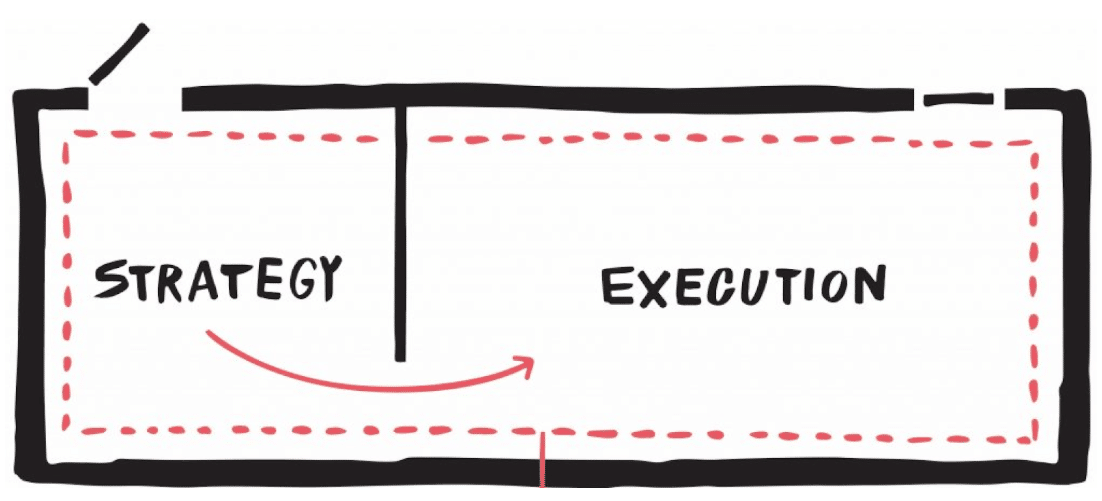

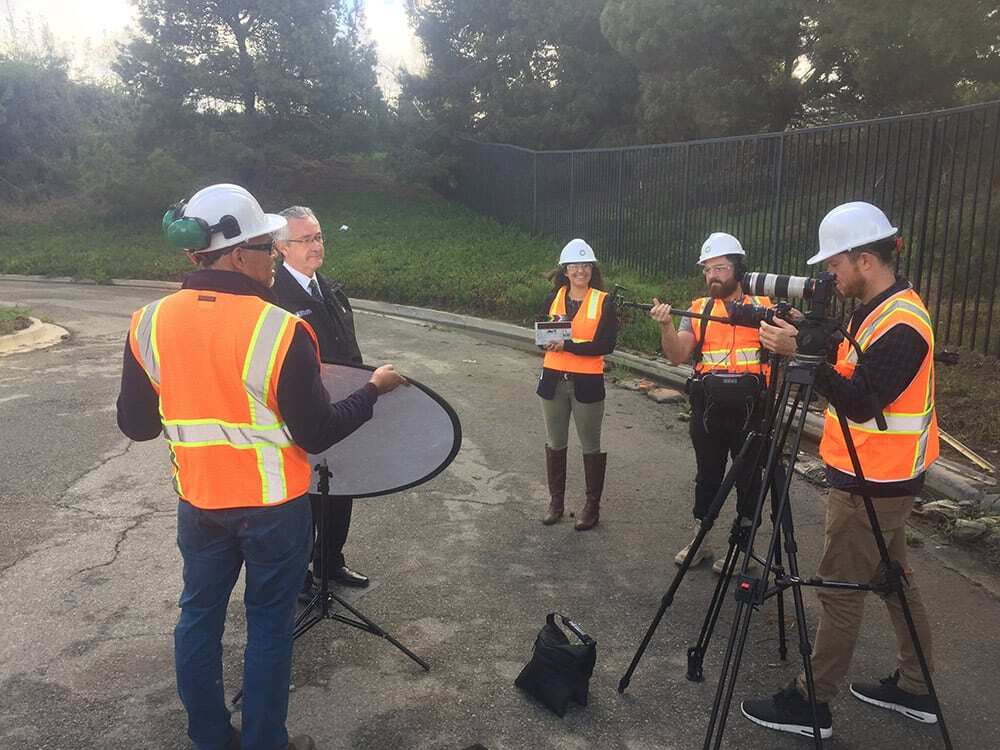
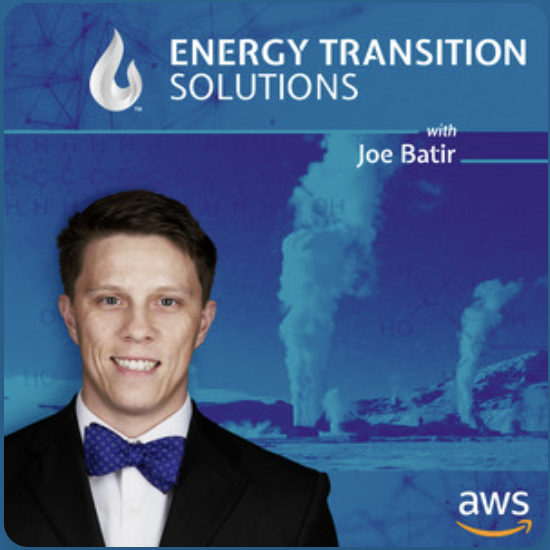

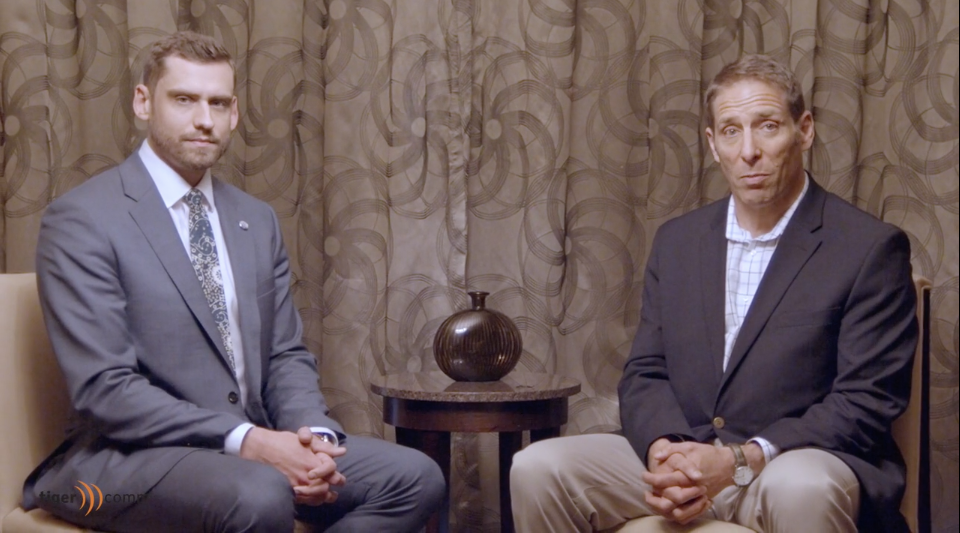

![Modern Cleantech Marketing Guide + [B2B Marketing Checklist]](https://www.tigercomm.us/hubfs/Screenshot%202022-03-08%20at%206-58-47%20PM-png.png)

